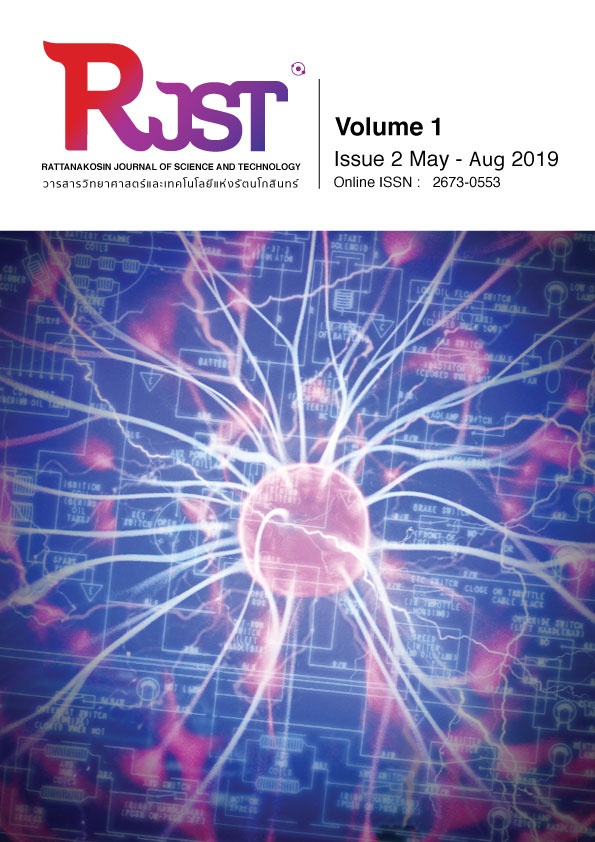A Novel Strengthening Technique for Concrete Compression Members using Post-Tensioned Metal Strapping
Main Article Content
Abstract
This paper introduces the innovative technique in strengthening concrete compression members using the Post-Tensioned Metal Straps (PTMS) system. The PTMS utilizes high-strength straps to actively confine structural members. This prestressed steel straps are tensioned and wrapped around the structural members by using the simple strapping tools as those used in the packaging industry. The experimental results from literature indicate the success of PTMS in strengthening structural concrete members by increasing capacity and ductility of structures under seismic loads. Consequently, PTMS is considered the strengthening solution that is faster and more cost-effective compared to other traditional strengthening methods. This paper highlights and discusses the potential uses of PTMS in strengthening applications in Thailand.
Article Details
The content within the published articles, including images and tables, is copyrighted by Rajamangala University of Technology Rattanakosin. Any use of the article's content, text, ideas, images, or tables for commercial purposes in various formats requires permission from the journal's editorial board.
Rajamangala University of Technology Rattanakosin permits the use and dissemination of article files under the condition that proper attribution to the journal is provided and the content is not used for commercial purposes.
The opinions and views expressed in the articles are solely those of the respective authors and are not associated with Rajamangala University of Technology Rattanakosin or other faculty members in the university. The authors bear full responsibility for the content of their articles, including any errors, and are responsible for the content and editorial review. The editorial board is not responsible for the content or views expressed in the articles.
References
Chai, Y.H., Priestley, M.J.N., Seible, F., 1991. Seismic retrofit of circular bridge columns for enhanced flexural performance", ACI Structural Journal, 88(5): 572-584.
Imjai, T. and Garcia, R., 2016. Performance of damaged RC beams repaired and/or strengthened with FRP sheets: an experimental investigation. In 24th Australasian Conference on the Mechanics of Structures and Materials (ACMSM24). 7-9 December 2016 Perth, Western Australia.
Frangou, M,. Pilakoutas, K., Dritsos, S., 1995. Structural repair strengthening of RC columns. Construction Building Materials, 9(5):259–266.
Frangou, M., 1996. Strengthening of concrete by lateral confinement. Ph.D. thesis, Department of Civil and Structural Engineering, The University of Sheffield, UK.
Frangou, M., Pilakoutas, K., 1994. Strengthening of RC columns by lateral Tensioning, ERCAD Berlin.
CEN. (2004). “Eurocode 2: Design of concrete structures, Part 1: general rules and rules for building”, European Committee for Standardisation, Brussels.
Moghaddam, H., Samadi, M., Pilakoutas, K., Mohebbi, S., 2010. Axial compressive behavior of concrete actively confined by metal straps; part A: experimental study. Materials and Structures, 43(10):1369–1381.
Moghaddam, H., Samadi, M., Pilakoutas, K., 2010. Compressive behavior of concrete actively confined by metal strips, part B: analysis. Materials and structures, 43(10):1383-1396.
Ma, C.K., Awang, A.Z., Omar, W., Liang, M., Jaw, S.W., Azimi, M., 2016. Flexural capacity enhancement of rectangular high-strength concrete columns confined with post-tensioned steel straps Structural Concrete, 4:668-676.
Holmes, N., Niall, D., O’Shea, C., 2015. Active confinement of weakened concrete columns. Materials and Structures, 48:2759–2777.
Keerathanikkul, K. and Imjai, T. 2019. Strengthening of concrete in compression using lateral confinement high strength steel strapping, in annual concrete conference 14. Pechbury, March 6-8, 2019. Thailand.
Imjai, T., Chaisakulkiet, C., Garcia, R, and Pilakoutas, K. (2018) Strengthening of RC members using Post-tensioned Metal Straps: state of the research. Lowland Technology International (LTI) journal, vol. 20 (2), pp. 187-196.


